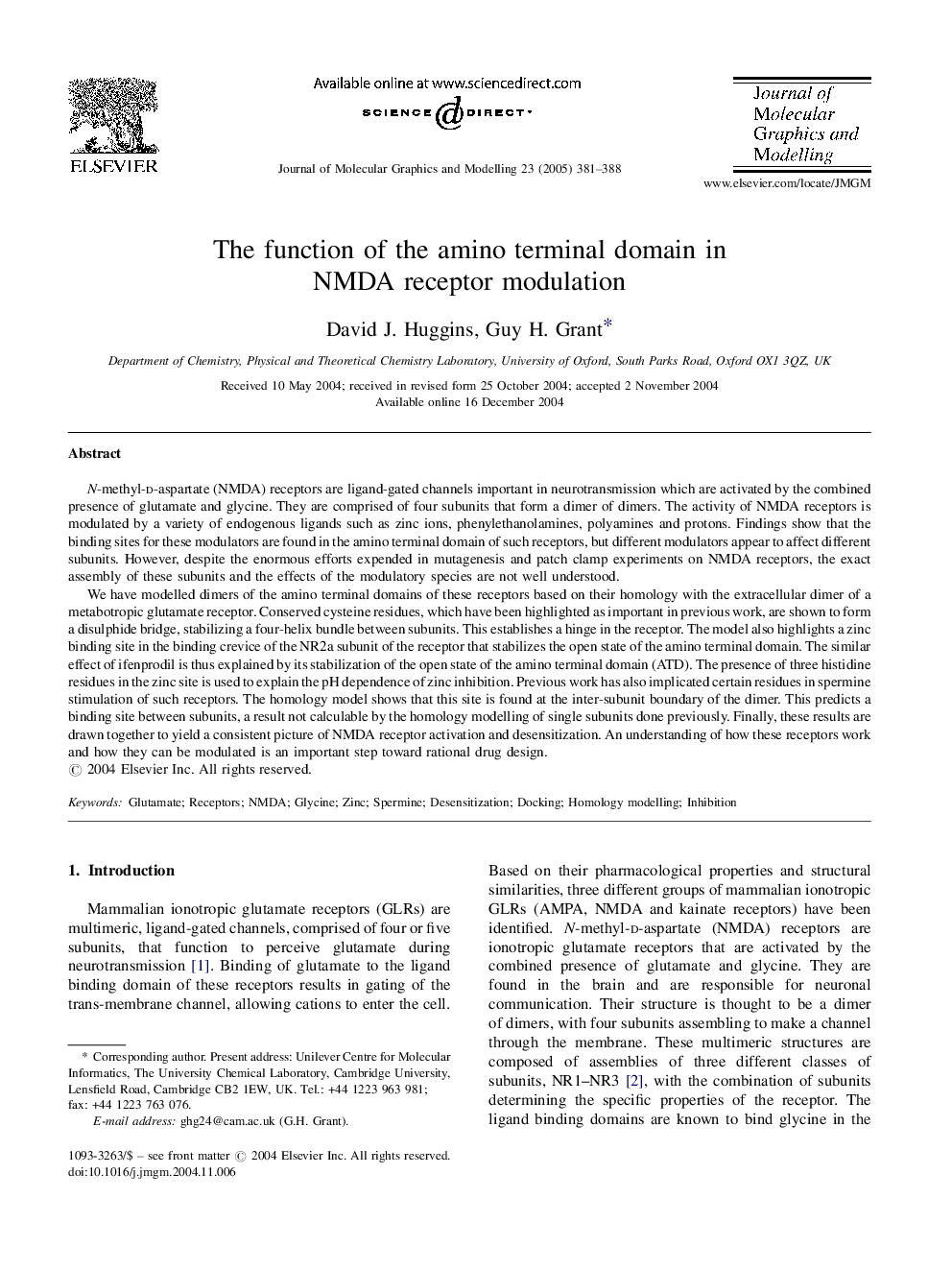| Article ID | Journal | Published Year | Pages | File Type |
|---|---|---|---|---|
| 10337292 | Journal of Molecular Graphics and Modelling | 2005 | 8 Pages |
Abstract
We have modelled dimers of the amino terminal domains of these receptors based on their homology with the extracellular dimer of a metabotropic glutamate receptor. Conserved cysteine residues, which have been highlighted as important in previous work, are shown to form a disulphide bridge, stabilizing a four-helix bundle between subunits. This establishes a hinge in the receptor. The model also highlights a zinc binding site in the binding crevice of the NR2a subunit of the receptor that stabilizes the open state of the amino terminal domain. The similar effect of ifenprodil is thus explained by its stabilization of the open state of the amino terminal domain (ATD). The presence of three histidine residues in the zinc site is used to explain the pH dependence of zinc inhibition. Previous work has also implicated certain residues in spermine stimulation of such receptors. The homology model shows that this site is found at the inter-subunit boundary of the dimer. This predicts a binding site between subunits, a result not calculable by the homology modelling of single subunits done previously. Finally, these results are drawn together to yield a consistent picture of NMDA receptor activation and desensitization. An understanding of how these receptors work and how they can be modulated is an important step toward rational drug design.
Keywords
Related Topics
Physical Sciences and Engineering
Chemistry
Physical and Theoretical Chemistry
Authors
David J. Huggins, Guy H. Grant,
